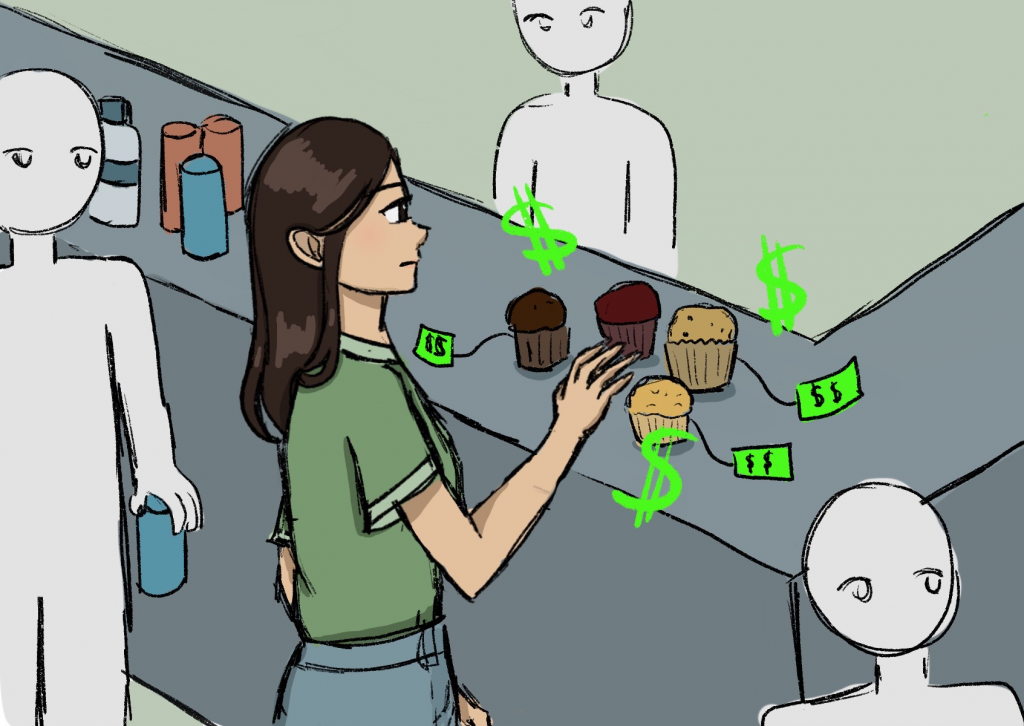School lunches–a topic that every in-school conversation reaches. Students and teachers are constantly coming in and out of the cafeteria during the day, whether it is early in the morning or later in the afternoon. It is a popular place at RHS to study, hang out, and most importantly: eat.
However, RHS recently established new food prices. The cost of several items on the menu has risen in a subtle manner. Muffins, a popular snack at RHS, are being charged more than last year. While many people have not noticed the small difference, there are several opinions on the matter. Although most people seem to buy lunch once in a while, there are some who depend on the cafeteria daily. RHS student Julia says: “If you’re spending money there every day, it might be expensive.” Additionally, Grace, a sophomore at RHS explains: “I don’t buy lunch a lot, but I know some of the prices have changed. I think charging $2.85 for a muffin is a little too much, but a lot of people will still buy it anyway.” Since plenty of students still rely on cafeteria lunches and other foods, the adjustment did not have a large impact.
However, this change did not only occur at RHS. According to the NY Times on October 13, “Prices continued to climb at a brutally rapid pace in September, with a key inflation index increasing at the fastest pace in 40 years, bad news for the Federal Reserve as it struggles to wrestle the cost of living back under control.” The US economy is on a decline, and inflation is worsening across the nation. This issue may have heavily influenced the cafeteria costs. RHS teacher Mrs. Gigante adds: “I buy less from the cafeteria these days, and I noticed that the salad prices have risen this year. When I go to the grocery store, prices there have increased too.” Our everyday lives are impacted by inflation, both outside and inside of RHS.
Freshmen have never bought lunch at the high school at the same rates as the upperclassmen. This brings fresh views to the table about cafeteria lunches. The transition from middle school is evident since there is a wider variety of foods available at RHS. Chloe, a former BF student, notes that “I feel like the food is fresher than in middle school. Since they do have to make a profit, the prices aren’t bad. They could cut down [prices] on some things, but most of it seems affordable overall.” Most freshmen are satisfied with the food system at RHS, especially with more choices and privileges than before.
Although there are not many negative reactions from RHS students regarding the food prices, some do offer suggestions. Emily, a freshman, mentions that “it might be helpful for food to have price tags to track money, so I can be more aware of the costs.” It is important for students to be informed of the connections between school and the outside world, which impact the way RHS continues to grow and change in the future.
Claire Cho
Staff Writer
Graphic: Jenny (Jooyeon) Yang

